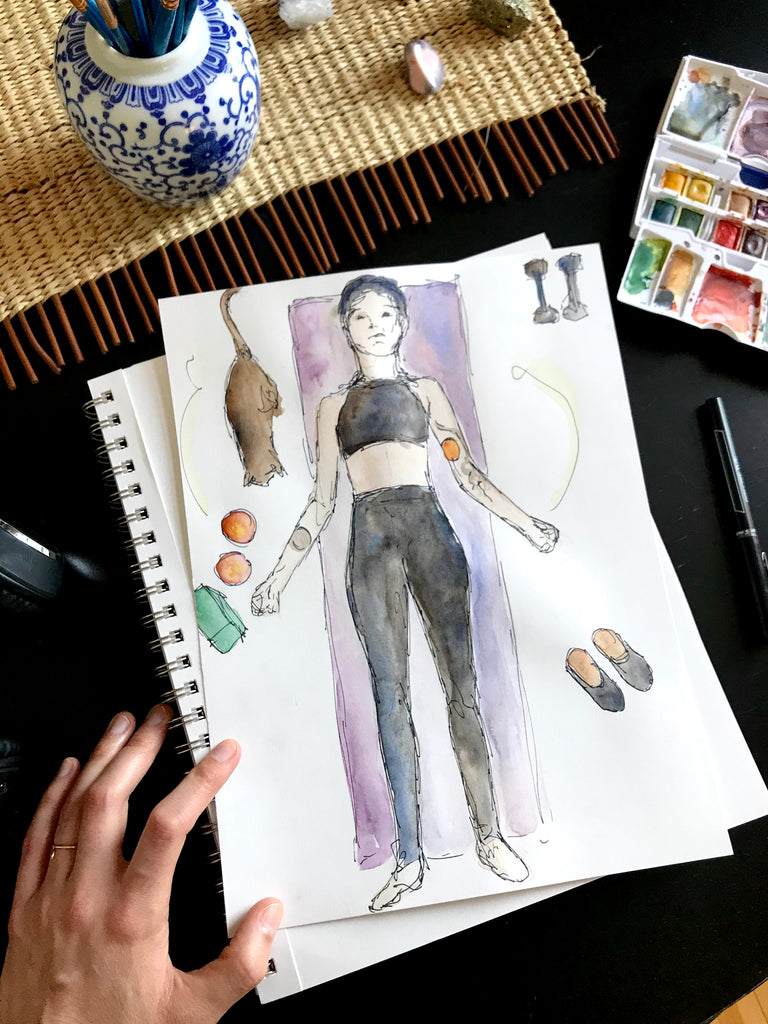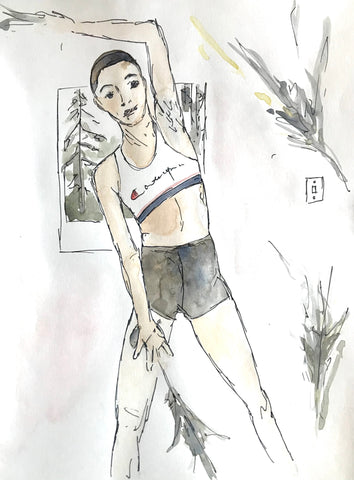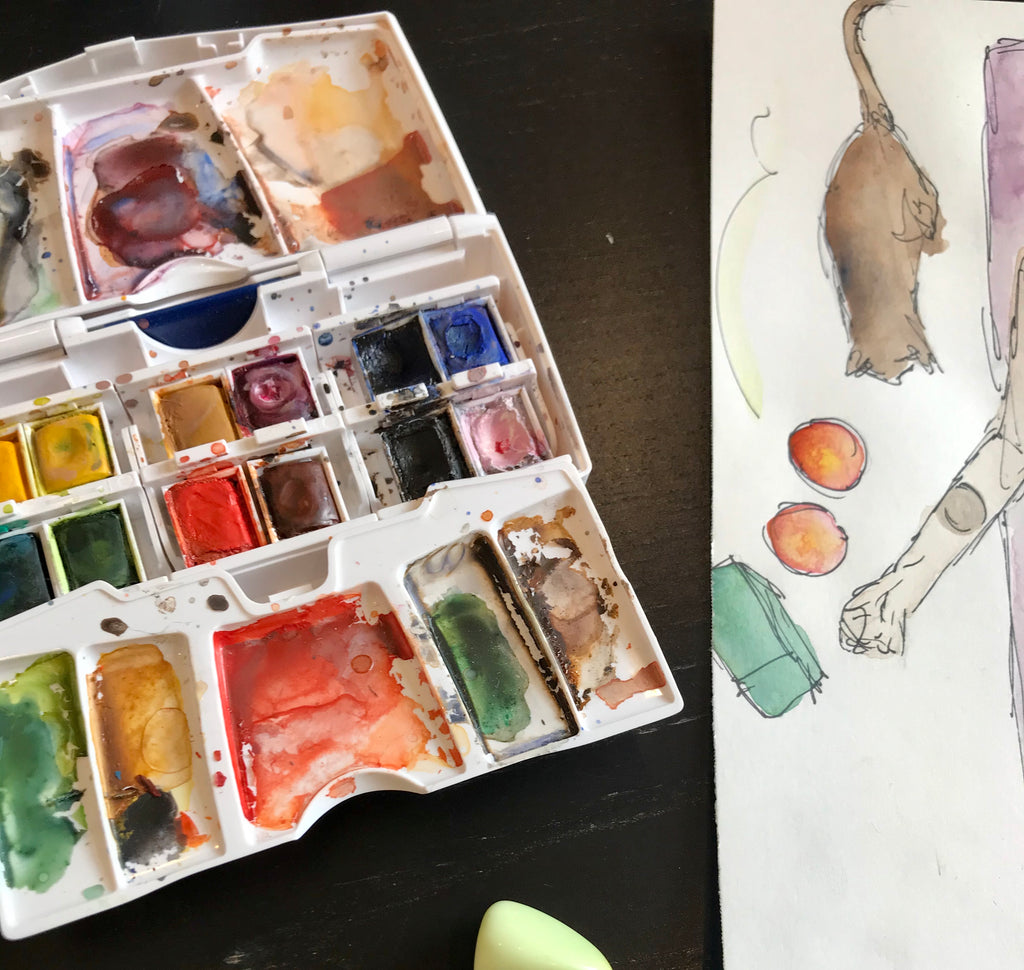How Do You Self-Soothe?
An Introduction to Art Therapy with Gillian King
My name is Gillian King and I’m an Ottawa-based visual artist and art therapist-in-training. The team at Wallack’s has asked me to provide an art therapy perspective during this challenging time. I’ll tell you a little bit about how I got into art therapy, why I think it can be helpful right now, and demonstrate an art activity that you can do at home.
Finding Art Therapy
Two years ago, I began a job in long-term care that involves creating visual arts programming for seniors, many of whom are living with dementia and other mental health issues. I had recently finished my Master’s degree in Visual Arts, and what started as a ‘day job’ illuminated the human experience and in turn, influenced my studio art-making in both subtle and seismic ways.
The work is exciting, challenging, heartwarming and heartbreaking. It has made me view art-making in a different way, and it has created within me a new recognition of the immense healing potential of art. This experience has prompted me to return to school to pursue my art therapy certification.
What is Art Therapy?
Art therapy is a mental health profession that uses art-making to facilitate expression, communication and healing. Similar to a ‘talk’ therapist, the role of an art therapist is to create a therapeutic environment and develop a partnership with clients in order to achieve their goals and work through their unique life challenges. This work can be done inside or outside psychiatric and hospital settings with children, adolescents, adults, seniors or family units, or people living with varying physical and mental health issues. The art therapy process uses a creative and visual approach that can either be used in place of verbal therapies, or in conjunction with them.
A common misconception about art therapy is that you need to be a skilled artist to participate in it. This is not true, as the goals of art therapy are quite different from the goals of art-making in an art school or the professional art world. Artworks made in academic or professional contexts are usually intended for public display and to contribute to a larger conversation in society. In contrast, the art produced through art therapy is made primarily for personal use and introspection. Considering this difference in motivations, it is not as important to consider how others will interpret an image. This often results in an immediacy to the art-making, making artworks appear raw or seemingly ‘unfinished’. As a student of art therapy, I am being trained in a variety of modalities in order to facilitate healing and expression through art-making.
How can Art Therapy help during Covid-19?
The Covid-19 pandemic, and our collective action of physical distancing, has many of us spending much more time at home than we’re used to. This has caused many of us—myself included—to feel more anxious about familiar activities, such as grocery shopping or caring for family members who might be more vulnerable to the virus. This anxiety may be additionally increased for all those working in essential job services who are not able to work from home.
For many artists, physical distancing measures mean limited or no studio access, cancelled or postponed exhibitions and residencies, gallery closures, and layoffs from jobs that provide necessary financial support to supplement their art-making. These new realities can result in a bombardment of feelings, including grief, loss, boredom, stress, loneliness, anxiety and fear. These feelings are no doubt having an impact on our mental health.
In this global pandemic, art therapy strategies can provide an opportunity and space for people to express their feelings and connect with their communities for support.
~
I’ll be sharing a self-directed therapeutic art project that I am doing at home to relieve stress. It is helping me connect with people that I love and focus on ‘self-soothing’ strategies that I have been leaning on during this time. The activity is open-ended, so choose the art materials that you have access to, or feel best working with.
~
Reach In.
Prepare:
- Using a pen and paper, or the Notes app on your phone, make a list of all of the self-soothing activities or strategies that you have been using over the past few weeks. Reflect on which ones have been helpful, but also the ones that are perhaps unhelpful or unsustainable.
Do:
- Select one or more of the self-soothing activities that have been most helpful, and express it visually, using any medium of your choice. Anything works: painting, drawing, collage, sculpture, photography, or video.
Here is an artwork I created using a fine tip marker and watercolour paints. I chose watercolour since it is a medium that I am currently teaching myself how to use and because it allows for a fluidity that I enjoy. The artwork features me using some of my self-soothing methods; physical movement through practices like yoga, pilates, and dance, alongside my furry companion, Frank:

Reflect:
Taking time to visually represent your self-soothing methods, as well as reflect on them will allow you time to process and focus on what gives you strength and resilience during tough times. Consider placing this artwork where you can see it often: on your nightstand, beside your mirror, or next to your coffee machine. This will remind you to revisit your strategies more often.
Reach Out.
Prepare:
- Reach out to your community and ask them about their self-soothing strategies during this time. This could be your best friend, a parent, neighbour, grandparent, colleague, family friend, or a niece or nephew. If they are interested in participating, ask them the same questions you asked yourself.
Do:
- With their permission, create an artwork that represents their self-soothing methods. You may want to ask them if they can send you a photograph of them practising these self-soothing methods, so that you can reference it while you are creating the artwork.
Reflect:
- Consider how their methods relate to your own. Are there any practices that may be of interest to you that you could adopt or explore? Maybe your loved one practices tai chi, maintains a garden, makes music, takes naps, finds solace in reading, walks their dog, runs, bakes, binge-watches Seinfeld, or is learning how to crochet. Everyone is different.
Share:
- Consider sharing your representations with the loved ones you’ve reached out to. If they are living alone or in a health centre environment, like long-term care, you could mail your artwork to them. Many health centres are able to safely accept letters for residents by placing them in a secure place for several days before delivering them.
This process of reaching out is important because it creates opportunities for conversation during a time when it is very important for us to connect with one another. It can also open us to new methods of self-soothing or coping in stressful situations. For example, maybe your friend is trying a new zoom workout, doing dance party videos, or maybe your aunt has an amazing lasagne recipe you could try out.
Here are some examples of a few of my friends and their self-soothing methods:
 |
 |
 |
We can use art-making to build resilience for ourselves and others by reconnecting and creating stronger bonds between ourselves and our communities.
Thank you for joining me.
~
Tag @wallacksart with your #selfsootheartwork and we’ll repost it.
Additional Mental Health Resources:
https://www.mentalhealthcommission.ca/English/mhcc-covid-19-resources
~
Gillian King is a painter, gardener, art educator, and Art Therapy candidate from Treaty One Territory in Winnipeg, Manitoba living in Ottawa, Ontario. Gillian holds an MFA from the University of Ottawa (2016) and is the winner of the 2019 Espronceda Centre for the Arts and Culture Artistic Prize (Barcelona, Spain), the 2017 RBC Emerging Artist Award, as well as the recipient of the 2017 Nancy Petry Award. King is currently in the process of obtaining her Art Therapist certification through the Toronto Art Therapy Institute and works as a Studio Arts Instructor for seniors at the Perley and Rideau Veterans’ Health Centre (Ottawa, On). Gillian is represented by Galerie Nicolas Robert (Montreal, QC).
Find her Website here: www.gillianking.com
Find her Instagram here: @agillianking

